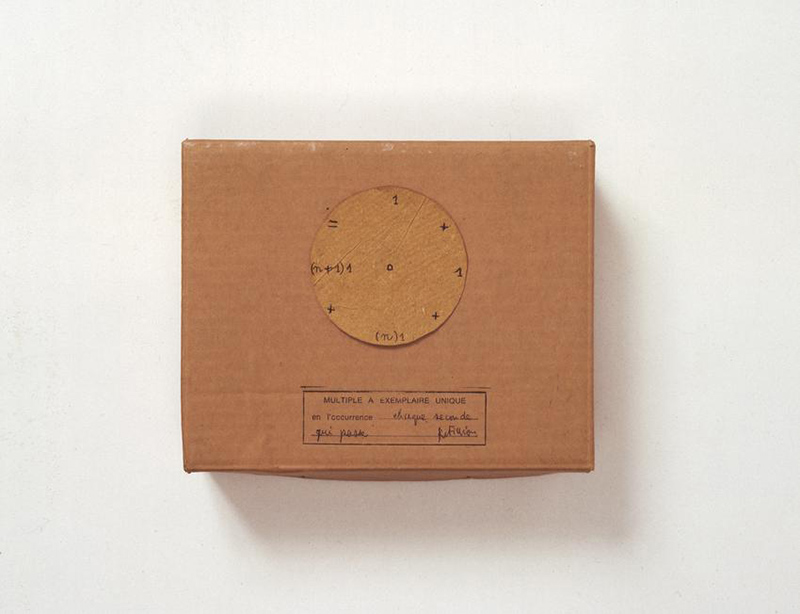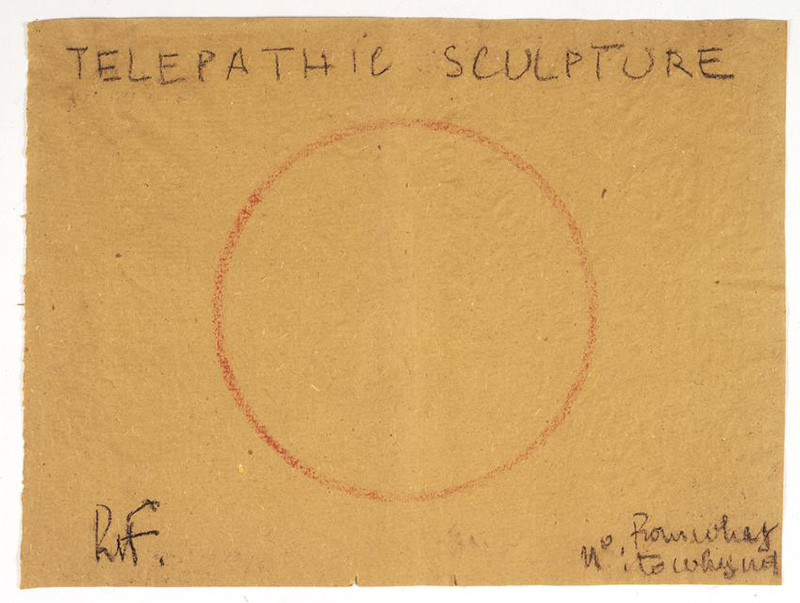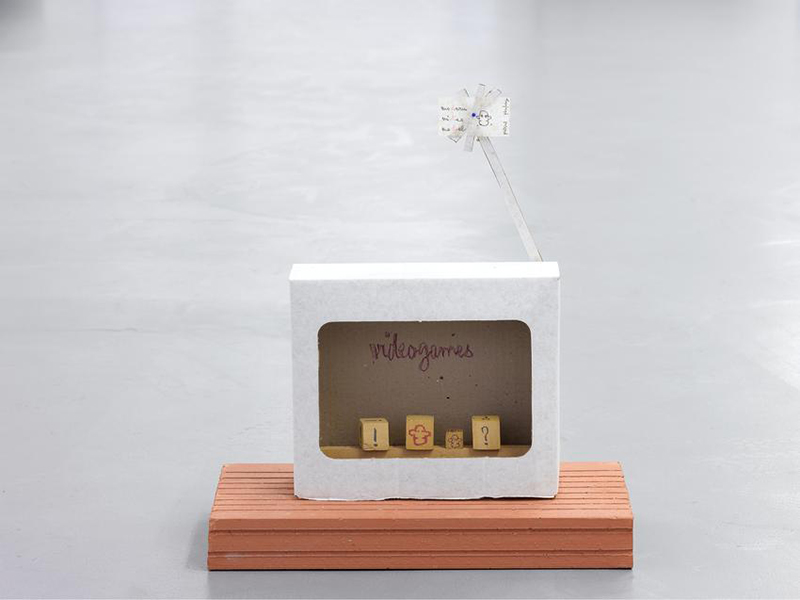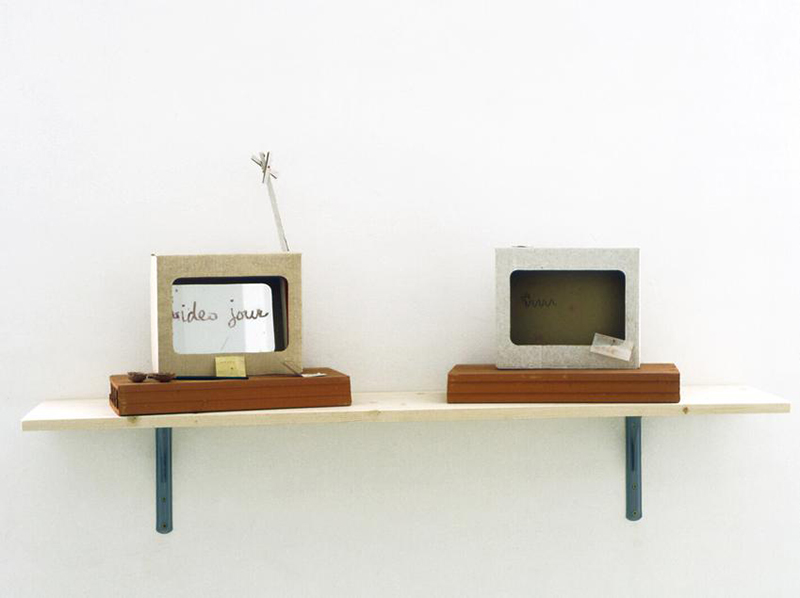ART CITIES:N.York-Robert Filliou
 A prolific artist beginning in the 1950s, Robert Filliou was self-taught, embracing disciplines as diverse as economics (in which he first trained and worked), philosophy, linguistics, metaphysics, Buddhism, and science. Calling himself a “genius without talent”, he developed a protean body of work comprising plays, happenings, poems, mail art, writings, assemblages, multiples, games, environments, films, and videos.
A prolific artist beginning in the 1950s, Robert Filliou was self-taught, embracing disciplines as diverse as economics (in which he first trained and worked), philosophy, linguistics, metaphysics, Buddhism, and science. Calling himself a “genius without talent”, he developed a protean body of work comprising plays, happenings, poems, mail art, writings, assemblages, multiples, games, environments, films, and videos.
By Efi Michalarou
Photo: Peter Freeman Inc. Gallery Archive
A survey of work of Robert Filliou is on presentation at Peter Freeman Inc. Gallery entitled “Seule la Fête est Permanente: Works 1962-1984”. The works of the exhibition range his early performative pieces from the 1960s to his brick installations “Briquolages” of the 1980s. Robert Filliou was born in Sauve, France in 1926, he was part of the Resistance movement organized by the communists and became a member of the French Communist Party during the war; he worked as a labourer for Coca Cola in Los Angeles; achieved a masters in economics; had a dual French-American nationality; while working as a United Nations advisor he was sent to Korea for three years to help write the Constitution and take part in the programmes for economic reconstruction of the country; from there, he travelled in the Far East; he lived in Egypt, Spain and Denmark, where he met Marianne Staffels, the woman with whom he would share his life and his artistic activity. In 1960, Robert Filliou designed his first visual work, “Le Collage de l’immortelle mort du monde”, a transcription of a random theatre play comparable to a chessboard on which all sorts of individual experiences are expressed. In 1961, at the Addi Kôcpke gallery (Copenhagen), his first personal exhibition, “Suspens Poems” was organized, made up of poems in the form of postal dispatches. In 1962, determined to remain outside the exhibition circuit, Robert Filliou carried his gallery in his hat. He became his own exhibition space: “La Galerie Légitime”. His works, gathered together in his beret and stamped “Galerie Légitime Couvre Chef d’Oeuvre” circulated in the streets with him (the idea is reminiscent of Marcel Duchamp’s suitcase). He then met George Maciunas, the centralizer of the activities of Fluxus. “La Galerie Légitime” invited several artists to exhibit in it. This was an art made up of attitudes and gestures, rather than saleable works. In 1963, with the architect Joachim Pfeufer, he created the “Poïpoïdrome” project, a meeting place and centre for “Permanent Creation” located at the crossroads between two currents: action and reflection.. In 1965, with George Brecht, Robert Filliou founded the gallery “La Cédille qui sourit” in Villefranche-sur-Mer, although it was usually closed because the artists were at the local café: “In my opinion, that’s where you get your best ideas”. They then founded “Eternal Network, La Fête Permanente”. After the filmographical experiments of “La Cédille qui sourit”, he made “Hommage à Méliès” with George Brecht and Bob Guiny to express their delight in their wonderment at the simplicity of the old silent films and, with Emmett Williams, Double Happening, Contribution for Happening & Fluxus, a performance staged in the women’s toilets at the Dusseldorf Academy of Fine Arts. In 1971, he created “la République géniale”: people enter its territory to develop their genius rather than their talent. Research is no longer the privileged domain of the person who knows, but of the person who does not know. His films are above all made of humour, derision and random elements, closely linked to the spirit of Fluxus.On 17/1/1973, with the idea of uniting people of all times, he celebrated the 1,000,010th Anniversary of Art at the Neue Galerie der Stadt in Aachen. As 10 years had gone by since Filliou had begun his “Histoire chuchotée de l’art”, 1,000,010 years corresponded to the arbitrary date of Man’s appearance on Earth. The artist was working on the search for the origin and proposed a new concept, “The Prebiological Genius”. In 1977, Robert Filliou was living in Canada, where he made several videos. It was not the medium itself which interested him. The artist, who never worried about creating “works of art”, chose any material as long as it conveyed his ideas and thoughts, and as long as it linked the territories of geniuses one to the other. It was in this sense that he used video, not only to keep a record of his performances as many artists have been doing since the 1960s, but also so that he could circulate his work: “To contact the audience that we want, I think it’s video that will do it”. He imagined a “Video-Universe-City” project as a means of propagating Constant Creation. With his wife Marianne, Robert Filliou withdrew for 3 years 3 months and 3 days to a Buddhist centre at Les Eyzies in the Dordogne (France). In 1987, he produced his last work, “Time is a Nutshell”, made up of several walnuts emptied so that they could contain a few words.
Info: Peter Freeman, Inc., 140 Grand Street, New York, Duration: 3/3-14/4/18, Days & Hours: Tue-Sat 10:00-18:00, www.peterfreemaninc.com






